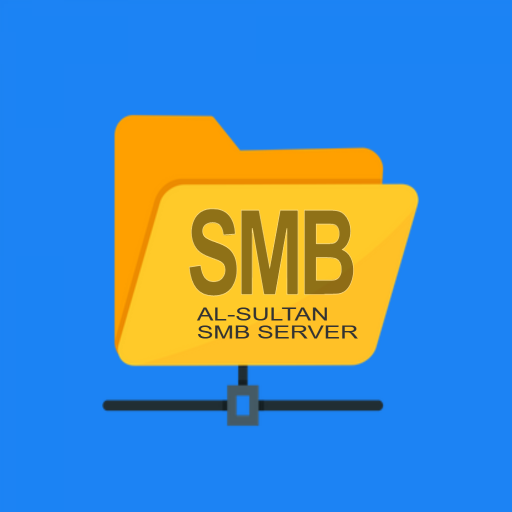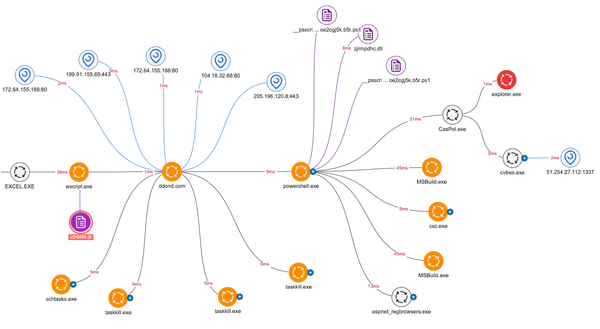Exploiting SMB Vulnerabilities: Technical Analysis and Defensive Strategies

DISCLAIMER: This article is provided strictly for educational and defensive purposes. The techniques described are meant to help security professionals understand how SMB vulnerabilities are exploited in order to better protect their environments. The authors and publishers do not endorse illegal or unauthorized testing of systems. Always obtain proper authorization before conducting security testing, and only apply these techniques in controlled, authorized environments. Unauthorized exploitation of vulnerabilities may violate local, state, and federal laws.
Server Message Block (SMB) protocol remains one of the most critical attack surfaces in modern Windows environments. Despite numerous security improvements over the years, SMB vulnerabilities continue to be prime targets for threat actors due to their potential for remote code execution, lateral movement, and data exfiltration. From the infamous EternalBlue exploit to more recent vulnerabilities like SMBGhost, understanding these attack vectors is essential for both offensive security professionals and defenders.
In this comprehensive guide, we'll explore the technical aspects of SMB vulnerabilities, exploitation methodologies, and effective defensive strategies. Whether you're a penetration tester, system administrator, or security analyst, this article will provide valuable insights into protecting your infrastructure against these persistent threats.
Understanding the SMB Protocol and Its Evolution
Before diving into specific vulnerabilities, it's essential to understand the SMB protocol itself and how it has evolved over time.
The Evolution of SMB Protocol Versions
The Server Message Block protocol has undergone significant changes since its inception:
- SMBv1 (1984): The original implementation, designed with minimal security considerations
- SMBv2 (2006): Introduced with Windows Vista, featuring improved performance and security
- SMBv2.1 (2008): Added with Windows 7, including minor enhancements
- SMBv3.0 (2012): Deployed with Windows 8, introducing major security improvements
- SMBv3.0.2 (2013): Released with Windows 8.1, adding minor performance enhancements
- SMBv3.1.1 (2015): Included with Windows 10, implementing stronger encryption
Each version attempted to address security issues present in previous iterations, but legacy support and backward compatibility requirements have often left systems vulnerable despite these improvements.
Core SMB Attack Surfaces
Several components of the SMB protocol stack present potential attack surfaces:
- Authentication Mechanisms: The way SMB handles user authentication
- Session Setup Process: The procedures for establishing SMB sessions
- File Sharing Implementation: How SMB manages shared files and permissions
- Named Pipes: Inter-process communication mechanisms
- Transaction Processing: The handling of SMB transactions and requests
Vulnerabilities in any of these components can lead to significant security exposures, from information disclosure to remote code execution.
Significant SMB Vulnerabilities and Their Technical Analysis
Let's examine some of the most significant SMB vulnerabilities from recent years, analyzing their technical details and exploitation methods.
MS17-010 (EternalBlue) - The Watershed Vulnerability
EternalBlue (MS17-010) represents one of the most devastating SMB vulnerabilities ever disclosed. This SMBv1 vulnerability was weaponized by the Shadow Brokers group in 2017 and later used in the WannaCry and NotPetya global attacks.
Technical Analysis
The vulnerability exists in the SMBv1 protocol's handling of specially crafted packets:
- Root Cause: The vulnerability stems from a failure to properly validate transaction requests within the SMBv1 protocol
- Attack Vector: By sending specially crafted packets to the targeted SMB server, attackers can trigger a buffer overflow condition
- Exploitation Impact: Successful exploitation allows arbitrary code execution in the context of the SMB server process (typically SYSTEM privileges)
The exploit typically follows this sequence:
1. Attacker establishes an SMB connection to the target
2. A specially crafted packet is sent to trigger a buffer overflow
3. The overflow condition allows shellcode execution
4. The shellcode creates a backdoor or executes the attacker's payload
The WannaCry ransomware leveraged this vulnerability to devastating effect, spreading automatically between vulnerable systems without user interaction. For detailed ransomware analysis techniques, review our dedicated article on the topic.
CVE-2020-0796 (SMBGhost) - The "Wormable" Vulnerability
SMBGhost (CVE-2020-0796) emerged as a critical vulnerability in March 2020, affecting the SMBv3.1.1 protocol in Windows 10 and Windows Server versions. It was particularly concerning because of its "wormable" nature.
Technical Analysis
The vulnerability exists in how the SMBv3 protocol handles compressed data packets:
- Root Cause: The vulnerability lies in the way SMBv3 decompresses data in memory, leading to a buffer overflow
- Attack Vector: By sending a specially crafted packet with compressed data, attackers can trigger memory corruption
- Exploitation Impact: Successful exploitation allows remote code execution with SYSTEM privileges
A simplified exploitation process looks like this:
# Pseudo-code for SMBGhost exploitation
# Create SMB negotiation packet requesting dialect 0x0311 (SMBv3.1.1)
packet = SMB_NEGOTIATE_PACKET()
packet.dialect = 0x0311
packet.add_compression_capabilities()
# Send malicious compressed data that triggers the vulnerability
packet.compression_context_id = 0x4141 # Arbitrary ID
packet.add_malformed_compressed_data() # This triggers the overflow
# Send the packet to the target
send_packet(target_ip, 445, packet)
# If successful, shellcode executes on the target
What made SMBGhost particularly dangerous was its potential for self-propagation similar to EternalBlue, though fortunately, no widespread exploitation occurred before patches were deployed.
MS08-067 - The Classic Windows RPC Vulnerability
Though technically exploiting RPC over SMB rather than SMB itself, the MS08-067 vulnerability remains one of the most widely known Windows network vulnerabilities and is still relevant for understanding SMB-related attacks.
Technical Analysis
The vulnerability exists in the Server service's handling of path canonicalization:
- Root Cause: Improper validation of crafted RPC requests sent over SMB
- Attack Vector: Sending specially crafted RPC requests to the Server service endpoint
- Exploitation Impact: Remote code execution with SYSTEM privileges
This vulnerability became infamous as the primary infection vector for the Conficker worm and remains a staple in penetration testing exercises for legacy systems.
Advanced SMB Exploitation Techniques
Beyond specific vulnerabilities, several techniques can be used to exploit the SMB protocol in secured environments. Understanding these helps defenders better protect their systems.
SMB Relay Attacks
SMB Relay attacks represent a powerful technique for lateral movement within networks that allow NTLM authentication. These attacks leverage NTLM authentication weaknesses to gain unauthorized access.
Technical Execution
The attack works as follows:
- Positioning: The attacker positions themselves as a man-in-the-middle between clients and servers
- Interception: When a client attempts to authenticate to a server, the attacker intercepts the authentication attempt
- Relaying: The attacker relays these credentials to another target server
- Access: The target server grants the attacker the same level of access as the intercepted user
Here's a simplified implementation using the popular Impacket toolkit:
# Basic SMB relay attack using ntlmrelayx.py
ntlmrelayx.py -tf targets.txt -smb2support -c "powershell -enc <base64_encoded_payload>"
# Generate a target list of potentially vulnerable hosts
crackmapexec smb 192.168.1.0/24 --gen-relay-list targets.txt
SMB relay attacks are particularly dangerous because they don't require any credential cracking - they simply reuse legitimate authentication attempts in real-time.
SMB Password Spraying and Brute Force
Password attacks against SMB can be highly effective, especially in environments with weak password policies.
Technical Execution
A typical approach involves:
- User Enumeration: Identifying valid usernames in the target domain
- Password Spraying: Trying a small set of common passwords against many accounts
- Targeted Brute Force: Attempting many passwords against specific high-value accounts
Tools like CrackMapExec simplify this process:
# SMB password spraying attack
crackmapexec smb 192.168.1.0/24 -d CONTOSO -u users.txt -p "Spring2023!"
# SMB brute force against specific accounts
crackmapexec smb 192.168.1.100 -d CONTOSO -u administrator -p passwords.txt
These attacks are often successful due to common password patterns and reuse. For defending against such attacks, consider implementing advanced threat detection techniques.
Kerberoasting Through SMB
Kerberoasting attacks target service accounts by requesting service tickets and then attempting to crack them offline. While not strictly an SMB vulnerability, these attacks often leverage SMB services.
Technical Execution
The attack typically proceeds as follows:
- Enumeration: Identify service principal names (SPNs) in the domain
- Ticket Requests: Request service tickets for these SPNs
- Offline Cracking: Extract the tickets and crack them to reveal service account passwords
Using tools like Rubeus:
# Enumerate SPNs and request tickets
Rubeus.exe kerberoast /outfile:hashes.txt
# Crack the extracted hashes using Hashcat
hashcat -m 13100 -a 0 hashes.txt wordlist.txt --force
Once service account credentials are obtained, attackers can authenticate to the associated services via SMB or other protocols.
Real-World Case Study: APT Group Leveraging SMB Vulnerabilities
In a recent incident response engagement, our team encountered a sophisticated attack chain using multiple SMB vulnerabilities to penetrate a defense contractor's network. This case study illustrates how these vulnerabilities are weaponized in real-world scenarios.
The Attack Chain
The threat actor, identified as likely being part of an APT group, executed a multi-stage attack:
- Initial Access: The attackers exploited an unpatched EternalBlue vulnerability on an internet-facing development server that was mistakenly exposed
- Privilege Escalation: After gaining SYSTEM access, they deployed a custom backdoor and credential harvesting tool
- Lateral Movement: Using harvested credentials, they performed SMB relay attacks to move laterally within the network
- Persistence: They established persistence by creating scheduled tasks and startup items on compromised systems
- Data Exfiltration: Sensitive intellectual property was exfiltrated using encrypted channels back to attacker-controlled infrastructure
Detection Challenges
The organization's security controls failed to detect the attack for several reasons:
- They lacked proper network segmentation, allowing lateral movement
- Their patch management program had missed the vulnerable server
- SMB signing was not enforced across the network
- Insufficient logging and monitoring of SMB-related activities
After the incident, the organization implemented the defensive measures described in the following sections, significantly improving their security posture against similar attacks.
Detection Strategies for SMB-Based Attacks
Detecting SMB-based attacks requires visibility across network traffic, authentication events, and system behaviors. Here are effective detection strategies that security teams should implement:
Network Traffic Analysis
Monitoring network traffic provides crucial visibility into potential SMB attacks:
- SMB Version Monitoring:
- Alert on SMBv1 traffic, which should be disabled in secure environments
- Monitor for unexpected version downgrades, which may indicate downgrade attacks
- Unusual Connection Patterns:
- Detect systems making an abnormal number of SMB connections
- Alert on SMB connections from unexpected source systems
- Identify unusual access times or access patterns
- Known Exploit Signatures:
- Deploy network IDS/IPS rules to detect known SMB exploit patterns
- Monitor for characteristic byte sequences associated with specific exploits
Implementation example using Zeek (formerly Bro) network monitoring:
# Zeek script snippet for detecting potential SMB exploitation
event smb1_message(c: connection, hdr: SMB1::Header, is_orig: bool)
{
# Alert on potential EternalBlue exploitation
if (hdr$command == SMB1::TRANSACTION_SECONDARY &&
hdr$status == 0 &&
c$id$resp_p == 445/tcp)
{
NOTICE([$note=SMB::Potential_EternalBlue,
$conn=c,
$msg="Potential EternalBlue exploitation detected"]);
}
}
Windows Event Log Monitoring
Windows Event Logs provide valuable insights into SMB-related security events:
- Failed Authentication Attempts:
- Monitor for Event ID 4625 (authentication failure)
- Track multiple failures from the same source IP
- Alert on brute force patterns with Event ID correlations
- SMB Session Establishment:
- Track Event ID 5140 (network share was accessed)
- Correlate with user authentication events
- Identify unusual access patterns or unauthorized access attempts
- Service Installation and Execution:
- Monitor for Event IDs 7045 and 4697 (service installation)
- Track service creation after suspicious SMB activity
- Alert on unusual service binary locations or names
For effective Windows event monitoring, implement a comprehensive SIEM solution with custom correlation rules specific to SMB-based attacks.
Endpoint Detection and Response
EDR solutions provide deep visibility into system activities that may indicate SMB exploitation:
- Process Execution Monitoring:
- Alert on suspicious process execution following SMB connections
- Monitor for unusual child processes from system services
- Track command-line parameters that indicate post-exploitation activities
- Memory Exploitation Indicators:
- Detect abnormal memory allocation patterns in SMB-related processes
- Monitor for shellcode injection techniques
- Identify unusual DLL loading in the context of system processes
- Network Connection Correlation:
- Correlate process execution with network connections
- Alert on processes making unexpected SMB connections
- Track data transfer volumes over SMB connections
Modern EDR platforms can be configured with specific detection rules for common SMB exploitation techniques, providing an additional layer of defense beyond network monitoring.
Mitigation Strategies Against SMB Vulnerabilities
Protecting against SMB vulnerabilities requires a defense-in-depth approach spanning multiple security domains.
Protocol Hardening
Implement SMB Encryption (for SMBv3):
# Enable SMB encryption
Set-SmbServerConfiguration -EncryptData $true
# Enforce encryption for specific shares
New-SmbShare -Name "Confidential" -Path "D:\Confidential" -EncryptData $true
Enforce SMB Signing:
# Enable SMB signing on servers
Set-SmbServerConfiguration -RequireSecuritySignature $true
# Enable SMB signing on clients
Set-SmbClientConfiguration -RequireSecuritySignature $true
Disable Legacy Versions:
# Disable SMBv1 completely
Set-SmbServerConfiguration -EnableSMB1Protocol $false
# Verify SMB protocol configuration
Get-SmbServerConfiguration | Select EnableSMB1Protocol, EnableSMB2Protocol
These configuration changes should be deployed via Group Policy for consistent application across the enterprise.
Network Segmentation and Access Control
- Network Level Restrictions:
- Block SMB traffic (TCP 445) at network boundaries
- Implement strict firewall rules between network segments
- Use VLANs and network segmentation to isolate critical systems
- Access Control Implementation:
- Apply the principle of least privilege for file shares
- Regularly audit share permissions and access
- Implement just-in-time access for administrative shares
- Authentication Hardening:
- Enable Extended Protection for Authentication (EPA)
- Implement LDAP channel binding
- Require NTLMv2 and Kerberos encryption
Proper network segmentation significantly reduces the impact of successful SMB exploits by containing lateral movement.
Patch Management and Vulnerability Mitigation
- Prioritized Patching Strategy:
- Implement an aggressive patching schedule for SMB-related vulnerabilities
- Prioritize internet-facing and critical infrastructure systems
- Develop emergency patching procedures for critical SMB vulnerabilities
- Vulnerability Scanning:
- Regularly scan for SMB vulnerabilities
- Verify patch application and effectiveness
- Monitor for new SMB-related CVEs and assess impact
- Compensating Controls:
- Implement host-based firewalls on systems that cannot be immediately patched
- Apply network-level protections for legacy systems
- Increase monitoring for systems with unresolved vulnerabilities
Effective patch management remains one of the most critical defenses against SMB vulnerabilities, as demonstrated by the global impact of WannaCry on unpatched systems.
Advanced Protection Measures
- Application Whitelisting:
- Implement application control policies to prevent malicious code execution
- Restrict execution permissions on SMB server processes
- Deploy process hollowing protection to prevent exploitation
- Behavior-Based Protection:
- Deploy advanced EDR solutions with behavior-based detection
- Implement deception technology with SMB honeypots
- Use machine learning-based anomaly detection for SMB traffic
- Active Directory Hardening:
- Implement advanced Active Directory security measures
- Deploy Protected Users security group for privileged accounts
- Implement tiered administration model to limit lateral movement
These advanced measures provide additional protection layers that complement traditional security controls.
Building a Testing Lab for SMB Vulnerabilities
For security professionals seeking to understand SMB vulnerabilities in a safe environment, building a dedicated testing lab is essential. This allows for practical experience without risking production systems.
Setting Up a Basic SMB Testing Lab
Here's a step-by-step guide to create a minimal lab environment:
- Deploy Vulnerable Systems:
- Set up virtual machines with various Windows versions
- Configure different SMB protocol versions
- Create test shares with various permission sets
- Testing Tools Setup:
- Install vulnerability assessment tools like Nmap, Metasploit, and CrackMapExec
- Configure network capturing tools like Wireshark
- Deploy monitoring solutions to observe attack indicators
- Network Configuration:
- Create an isolated virtual network
- Configure different network segments
- Implement basic monitoring for traffic analysis
This basic lab provides a safe environment for practicing SMB vulnerability assessment and exploitation techniques for educational purposes.
Advanced Lab Configurations
For more comprehensive testing, consider these advanced configurations:
- Active Directory Integration:
- Deploy domain controllers
- Configure domain-joined systems
- Implement Group Policies for SMB configurations
- Detection Testing:
- Implement SIEM solutions for log collection
- Configure IDS/IPS systems
- Deploy honeypot systems to attract and analyze attack techniques
- Patching Scenarios:
- Maintain systems at various patch levels
- Test mitigation strategies for unpatched systems
- Validate detection of exploitation attempts
This lab environment allows security professionals to:
- Understand SMB vulnerabilities in depth
- Practice exploitation techniques in a controlled environment
- Test detection and mitigation strategies
- Develop custom security controls
Recommendations and Best Practices
Based on our extensive experience with SMB security, we recommend the following approach for organizations:
- Begin with a comprehensive SMB security assessment to identify existing vulnerabilities and misconfigurations
- Implement a tiered approach to SMB hardening based on system criticality and exposure
- Deploy robust monitoring and detection capabilities focused on SMB-related attack techniques
- Regularly conduct penetration testing specifically targeting SMB services
- Train IT staff on secure SMB configuration and common attack vectors
- Develop incident response procedures specific to SMB-based attacks
- Implement a defense-in-depth strategy that includes network, host, and identity protections
Organizations should prioritize these controls based on their specific risk profile and the sensitivity of their environment.
Conclusion: Securing the Foundation of Windows Networking
Server Message Block remains a critical component of Windows networking infrastructure and continues to be a prime target for attackers. By understanding the technical aspects of SMB vulnerabilities and implementing proper security controls, organizations can significantly reduce their exposure to these persistent threats.
The combination of protocol hardening, network segmentation, comprehensive monitoring, and regular patching creates a resilient environment that can withstand sophisticated SMB-based attacks. Remember that SMB security is an ongoing process that requires continuous attention as new vulnerabilities and attack techniques emerge.
For security professionals, keeping current with the latest SMB vulnerabilities and exploitation techniques is essential for both offensive security testing and defensive strategy development. The techniques outlined in this article provide a foundation for understanding these critical security issues.
For more advanced guidance on protecting your organization against network-based attacks, explore our related resources:
- NTLM Relay Attacks: Understanding the Threat
- Advanced Active Directory Security Best Practices
- Blue Team Strategies: Advanced Threat Detection
- The Ultimate Cyber Defense Playbook
- Advanced Threat Hunting Techniques
Have you encountered SMB-based attacks in your environment or implemented effective defenses against them? Share your experiences in the comments below or reach out to our security team for assistance with comprehensive SMB security assessments.




